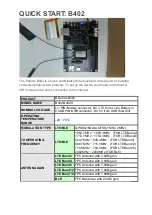
CHAPTER 10: THEORY OF OPERATION
OVERVIEW
L90 LINE CURRENT DIFFERENTIAL SYSTEM – INSTRUCTION MANUAL
10-7
10
Figure 10-1: Block diagram for clock synchronization in a two-terminal system
The L90 provides sensitive digital current differential protection by computing differential current from current phasors. To
improve sensitivity, the clocks that control current sampling are closely synchronized via the ping-pong algorithm.
However, this algorithm assumes that the communication channel delay is identical in each direction. If the delays are not
the same, the error between current phasors is equal to half of the transmit-receive time difference. If the error is high
enough, the relay perceives the “apparent” differential current and misoperates.
For applications where the communication channel is not symmetric (for example, SONET ring), the L90 allows the use of a
global positioning system (GPS) to compensate for the channel delay asymmetry. This feature requires a GPS receiver to
provide a GPS clock signal to the L90. With this option there are two clocks at each terminal: a local sampling clock and a
local GPS clock. The sampling clock controls data sampling while the GPS clock provides an accurate, absolute time
reference used to measure channel asymmetry. The local sampling clocks are synchronized to each other in phase and to
the power system in frequency. The local GPS clocks are synchronized to GPS time using the externally provided GPS time
signal.
GPS time stamp is included in the transmitted packet along with the sampling clock time stamp. Both sampling clock
deviation and channel asymmetry are computed from the four time stamps. One half of the channel asymmetry is then
subtracted from the computed sampling clock deviation. The compensated deviation drives the phase and frequency lock
loop (PFLL) as shown in the previous figure. If GPS time reference is lost, the channel asymmetry compensation is not
enabled, and the relay clock can start to drift and accumulate differential error. In this case, the 87L function has to be
blocked. See the Application of Settings for examples of how to program the relay.
10.1.10 Frequency detection
Estimation of frequency deviation is done locally at each relay based on rotation of positive sequence current, or on
rotation of positive sequence voltage, if it is available. The counter clockwise rotation rate is proportional to the difference
between the desired clock frequency and the actual clock frequency. With the peer-to-peer architecture, there is
redundant frequency tracking, so it is not necessary that all terminals perform frequency detection.
















































